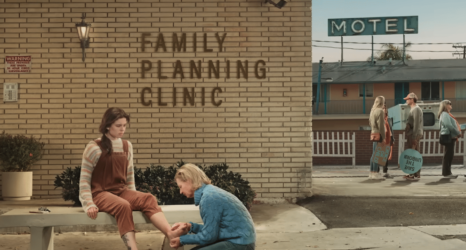Journalists hold a key power and a vital responsibility in our society: They control the information the public receives about the world. Journalists uncover corruption and injustice; they influence government action and public opinion. But women, for the most part, are kept on the sidelines in this field—and are largely barred from the influence that comes along with it.
Although female journalists have made great inroads in the last few decades, they are still critically underrepresented in American newsrooms. According to the American Society of News Editors’ 2015 census, women make up a mere 37.1 percent of newsroom staff, and an even smaller percentage of supervisors. Furthermore, in 2011, minority women accounted for just 19.3 percent of all women in the newsroom. The percentage of women is highest among copy and layout editors, generally some of the least prestigious and lowest-paying positions in the profession.
We live in a society that silences women all too often. Think of the recent congressional hearings where Planned Parenthood president Cecile Richards was grilled by a panel of nearly all men, reflecting the similarly distressing lack of women representatives in government. When it comes to women’s reproductive health, our safety from harassment and assault, or our right to fair pay, women’s voices are frequently drowned out, because those in power—in the government, in media, in corporations, and on college campuses—are disproportionately male.
Women are rarely able to express thoughts and opinions in the media the way men are. According to The Op-Ed Project’s Byline Report, men write 80 percent of print media opinion pieces. This means that a full 40 years after the women’s movement, our culture still does not value what women think and tells us, implicitly and explicitly, that we should not speak out on serious issues because our voices do not matter.
As a result, women journalists remain ghettoized in the area of “pink journalism”—that is, topics specifically targeted toward women, often including subjects like sex, parenting and fashion. Men write almost 90 percent of articles on international politics and economics, while women write the majority of articles about family and style, according to The Op-Ed Project. The former are matters that affect everyone in our society, and the lack of women covering these important topics limits our perspective. We cannot truly understand the issues we all face when they are presented almost exclusively through the male lens.
Another problem with pink journalism—aside from the fact that it is seen as frivolous, furthering the misconception that men are more substantive writers and thinkers—is that it defines women writers and the subjects they write about by gender. As a writer who happens to be a woman, the value of my writing and the content of my work should not be dictated by the fact that I am a woman. No one ever precedes word “journalist” with “male” like they do “female.” They’re just journalists. There’s no such thing as “blue journalism.” Because men have an enormous amount of control in this field, holding nearly two-thirds of supervisory positions, according to the ASNE 2015 census, they are not marginalized the way female writers so often are.
In the feminist movement right now, there’s a great deal of talk about getting more women into science, technology, engineering and math (STEM). There are campaigns to stop children’s toys and activities from being marketed by gender. These are, of course, all vital issues that need to be discussed. But why aren’t we also coming up with real solutions to prevent women in the media from being confined to stereotypically feminine subjects? Why aren’t we also implementing more formal hiring procedures to ensure that female journalists have equal access to higher paying and more important positions, just like their male counterparts do?
It’s not enough to encourage more women to pursue careers in the media. That will not fix the gender gap at the root of many of these issues. Women already outnumber men in college journalism programs. Clearly, there are many women who want to be journalists, but for various reasons, they’re either leaving the field or getting stuck in low-paying, relatively dead-end jobs. We need to create more training and mentoring programs like the ones started by the Women’s Media Center and The Op-Ed Project. Resources such as these help women in journalism become equally represented in management positions and report on whatever they want—whether that is love and relationships or politics and finance.
The goal of feminism is to secure equal rights for women, and that necessitates being listened to. But we’re not going to be heard until we stop merely reporting statistics on the woeful state of women in journalism and begin actually campaigning for more women to cover the issues that affect all of us.
Get Ms. in your inbox! Click here to sign up for the Ms. magazine newsletter.
Photo courtesy of Flickr user Roger H. Goun licensed under Creative Commons 2.0





